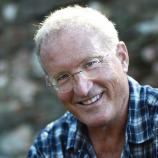Excerpt
Excerpt
Hue 1968: A Turning Point of the American War in Vietnam

It had been a long year for Frank Doezema. He was heartily homesick. Each time he wrote home to Shelbyville, Michigan, near Kalamazoo, he would note the days left in his one-year tour in Vietnam. On January 21, he told his brothers: “It won’t be long now. Look out world, here I come! When I say world, I mean the good ole USA or Michigan or Shelbyville or just plain home . . . Let’s see, 55 days, that’s eight weeks.”
He knew exactly what he would do when he returned: work on his family farm and eventually run it, either alone or with his brothers. Cornfields and cows were all he wanted, careerwise. He’d collected his diploma from Kalamazoo Christian High in 1966, and that had closed the book on school. Like all young men with a clear vision of their future, Doezema was in a hurry. He had his eye on a girl he intended to marry, although she didn’t know it yet. He’d have been well along already, with farm and family, if not for the draft.
Every healthy male high school grad in the United States in 1966 without college plans was immediately draft bait. It was a stubborn reality, like taxes. Nearly everyone had a father or uncles who had fought in World War II or Korea, or both, and many had grandfathers who had fought in World War I. War was stitched deep in the idea of manhood. It was portrayed heroically in popular films and TV shows, books, and even comic books: stories of men bravely defying death and besting foes in faraway places for God, family, and flag. Doezema was not eager to be a soldier, but he didn’t question the call. In fact, knowing there was no draft deferment for farmwork, he’d sought out the most efficient way to meet his obligation. He took advantage of an army program— designed to meet the urgent need for men in Vietnam—that would halve his commitment from four years to two. And as he’d expected, he was in Vietnam within months of completing basic training.
He was an authentic Michigan cornstalk: tall and thin with a blond crew cut and a long square jaw. Trained as a radio operator, he spent the first six months in-country assigned to a marine captain named Jim Coolican, who worked as an adviser to an ARVN battalion. Coolican rejected Doezema at first. The captain stood about six foot five, and towered over the Vietnamese soldiers he advised. Enemy snipers targeted officers and Americans. An officer and his radioman had to stay close together—the radio was needed to call in artillery and air support—and Coolican worried that being with Doezema, who was nearly as tall as he was, would double the danger. It was especially dangerous for Doezema because a radioman carried the unit strapped to his back: it was bulky and had a high antenna. Coolican considered himself brave, but he wasn’t stupid. Still, Doezema pushed. He liked the captain and he liked the idea of seeing real combat during his tour. And from what he’d heard, the ARVN airborne troops mixed it up with the enemy often. Coolican eventually gave in, and the two had worked together seamlessly.
They saw action often. Their battalion, part of ARVN’s First Division, was deployed in I Corps, the country’s northernmost sector, which encompassed five provinces of South Vietnam and stretched from south of Hue all the way north to the demilitarized zone (DMZ) and the border with the North. This was the easiest place for NVA troops to infiltrate, and it was obvious that Hanoi was planning something big, because many soldiers were coming. In the fall of 1967, there had been frequent violent clashes in this sector, and contrary to the poor reputation of South Vietnam’s forces, the men Coolican and Doezema served with were aggressive and competent. During those months, the two tall Americans saw far more combat than most of their countrymen, and despite their size, neither had been hit. In time, they felt lucky to be paired. They worked shoulder to shoulder in the field during the day, ate their meals together, and slept side by side, often softly talking into the night. They shared everything. At twenty-seven, Coolican was eight years older than his radioman, who always called him Captain or sir, but in time there was little barrier of rank between them. Coolican came to feel like Doezema’s older brother.
Hue 1968: A Turning Point of the American War in Vietnam
- Genres: History, Nonfiction
- paperback: 624 pages
- Publisher: Grove Press
- ISBN-10: 0802127908
- ISBN-13: 9780802127907



